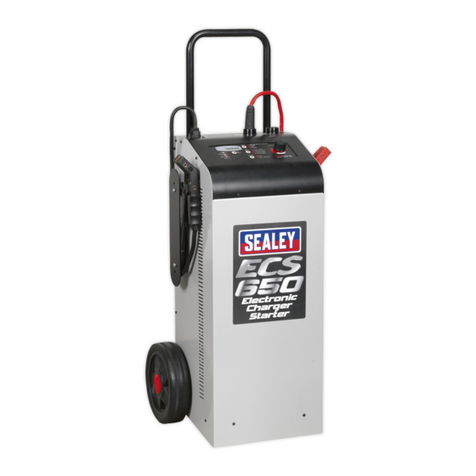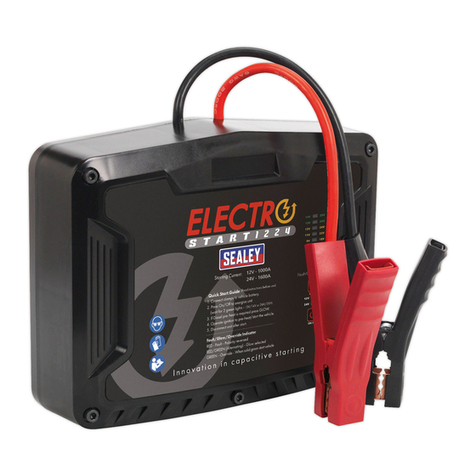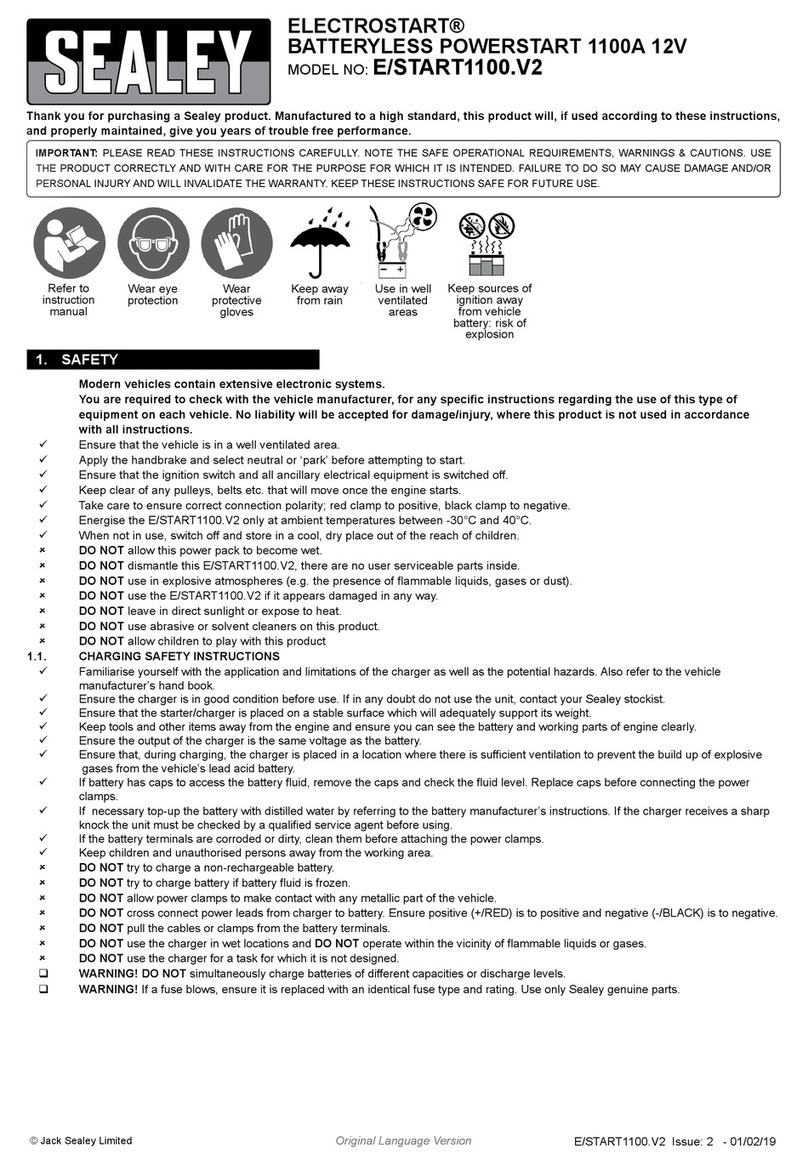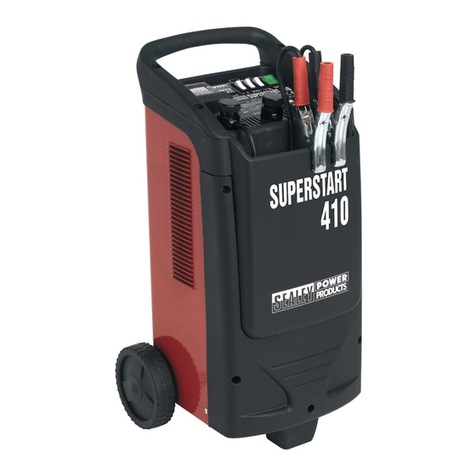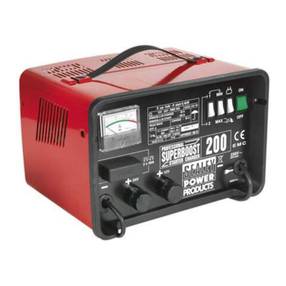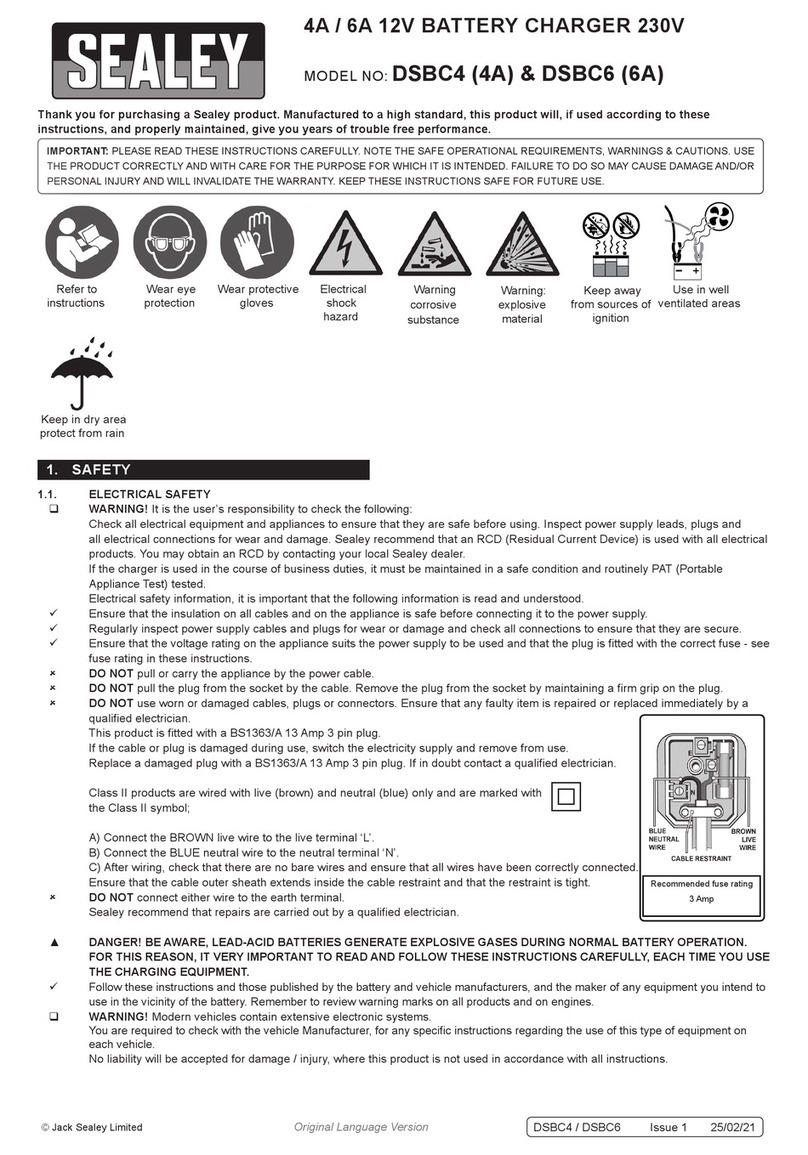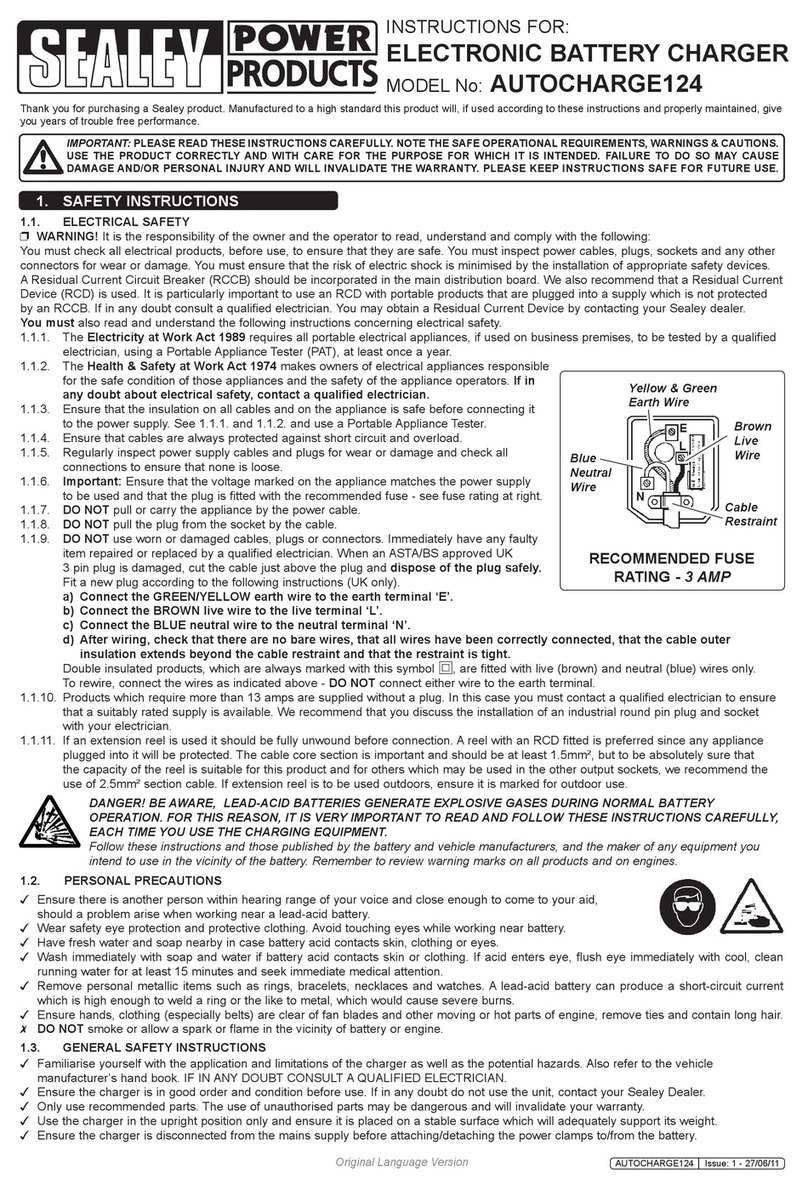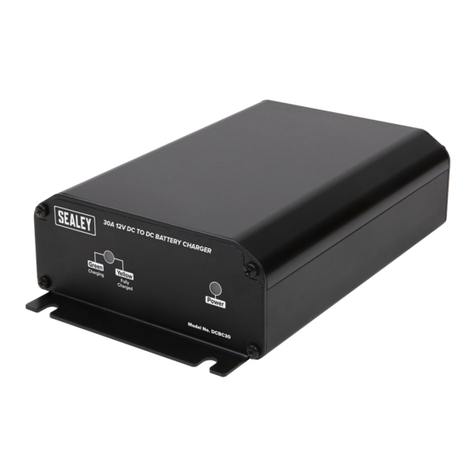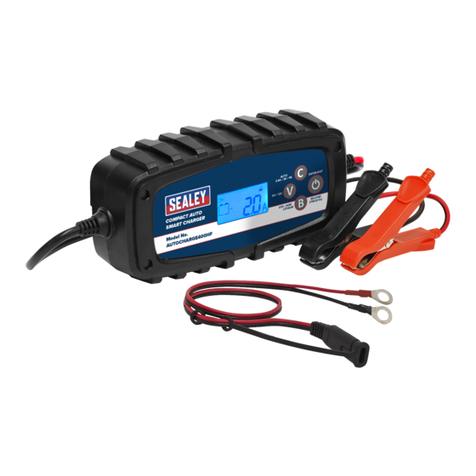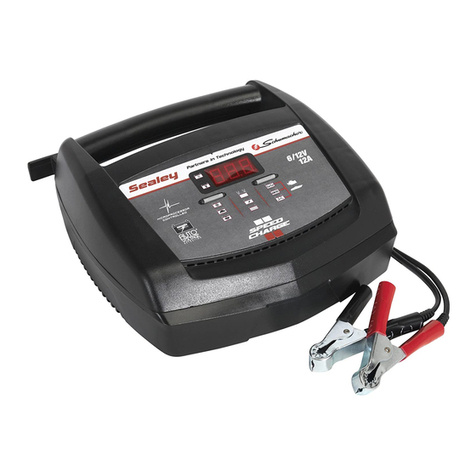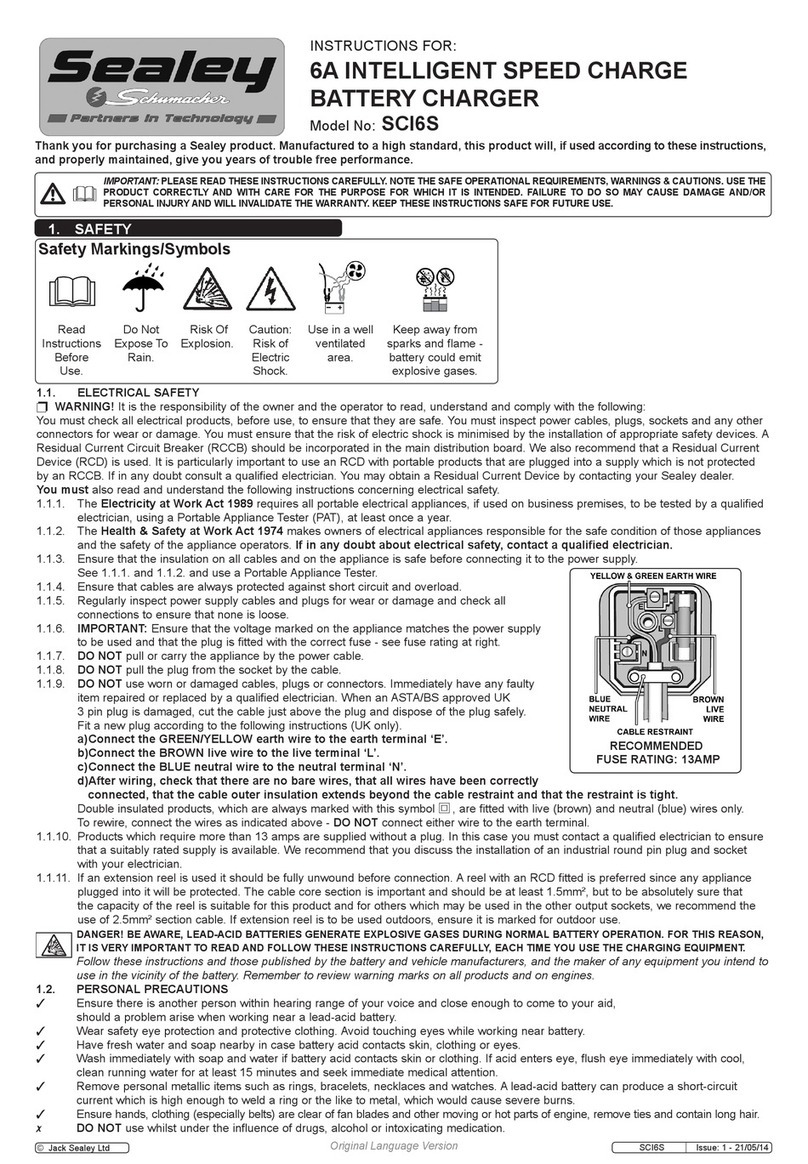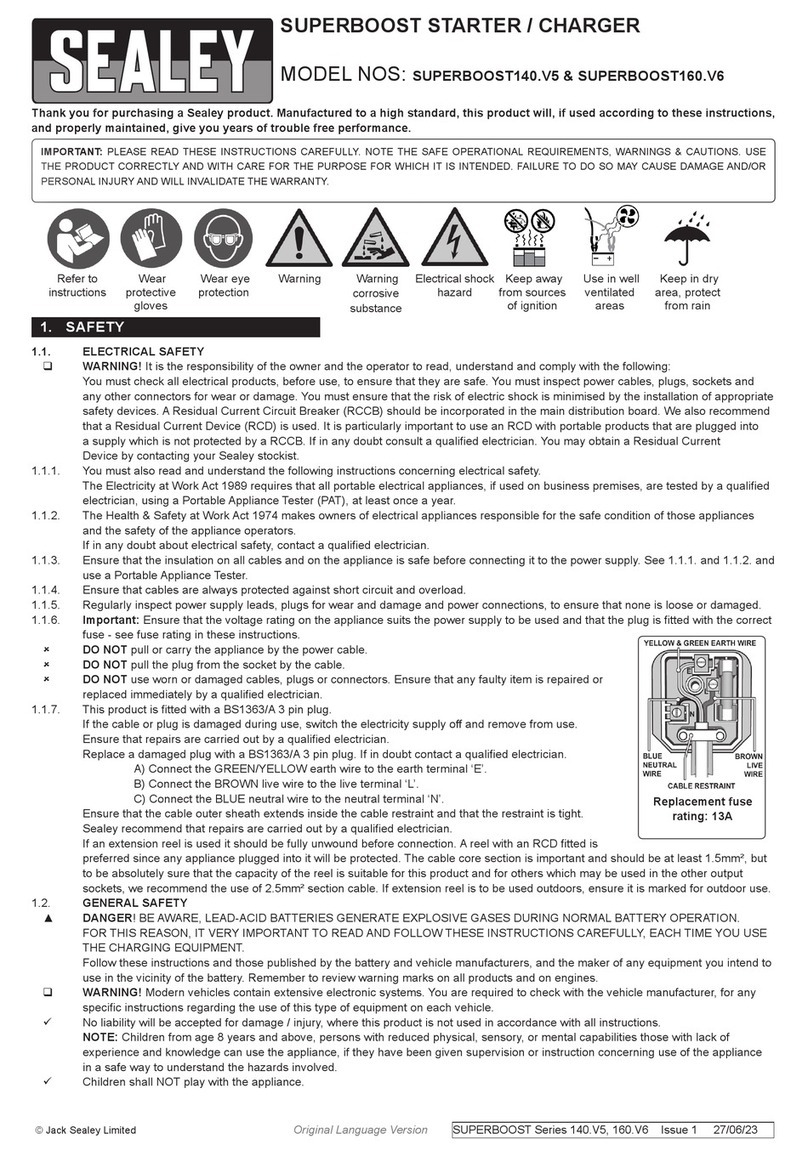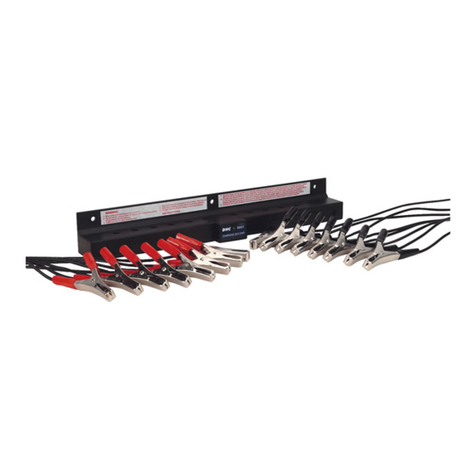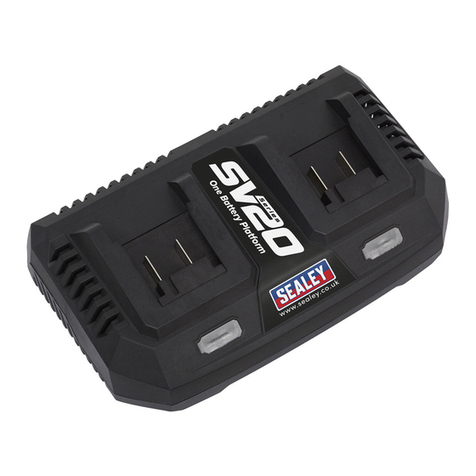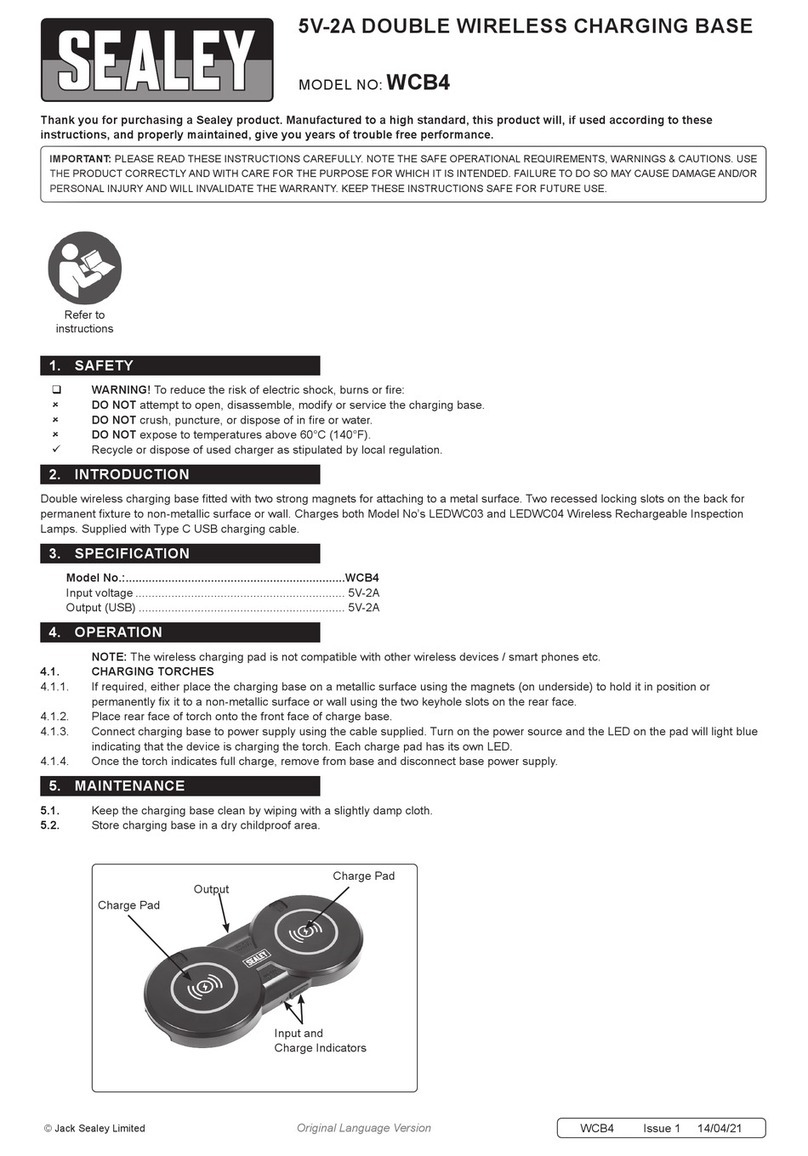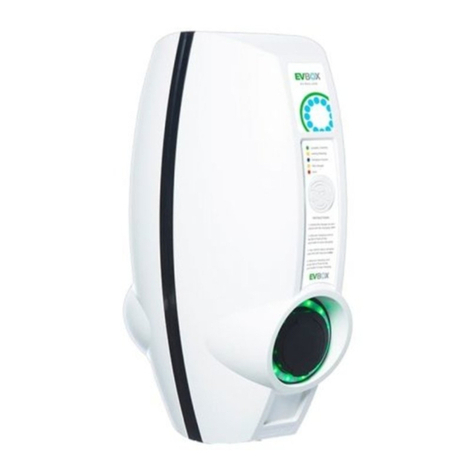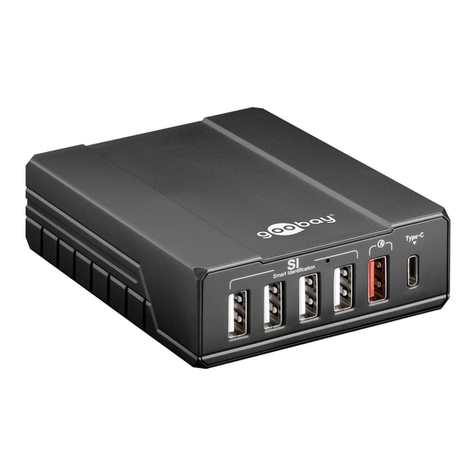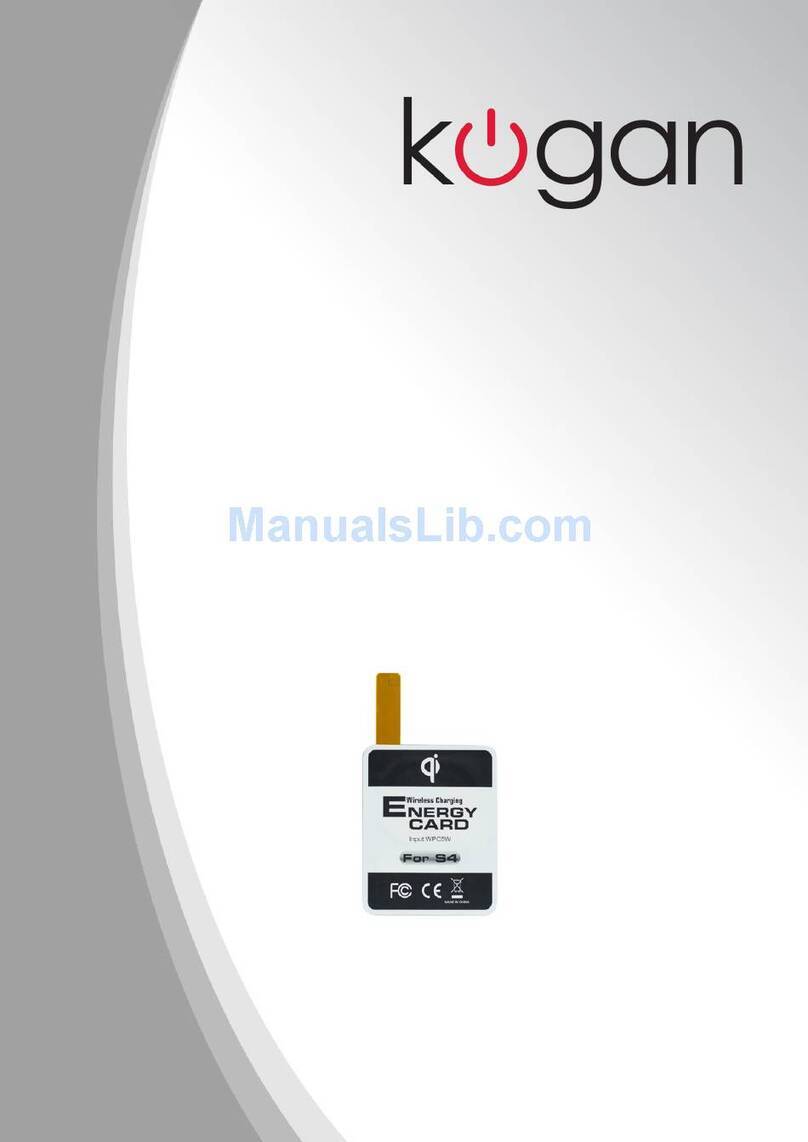
WARNING! Ensure there are no sources of ignition near the work area i.e. naked flames, cigarettes, flame heaters etc as the charging
process produces explosive gases.
WARNING! Ensure the working area is well ventilated as the gases produced are explosive.
9Locate the charger in a suitable work area. Keep area clean and tidy and free from unrelated materials, and ensure there is adequate
lighting.
9Wear approved safety eye protection (standard spectacles are not adequate).
9Remove ill fitting clothing. Remove ties, watches, rings and other loose jewellery, and contain long hair.
9Read vehicle manufacturer’s instructions manual to check for any specific battery charging information.
9Disconnect the battery from the vehicle and move it to a safe, dry level area for charging. If the battery cannot be removed from the
vehicle refer to manufacturer’s hand book.
9Clean the charger clamps and battery terminals to remove any oxidation.
9Ensure the correct clamp polarity is observed when connecting to the battery. Positive is indicated by (+) and is Red, negative is
indicated by (-) and is black.
8DO NOT pull or carry the charger by its power supply lead. Products must not be pulled or carried by their output cables.
8DO NOT pull power plugs from sockets by the power cable.
8DO NOT attempt to charge a non-rechargeable battery.
8DO NOT use the charger for any purpose other than that for which it is designed.
8DO NOT allow the charger terminal clamps to touch each other when the power is on. Remember that gases are produced which may
ignite if sparks occur.
8DO NOT place the charger inside the vehicle. Remove the battery to a safe distance for charging.
8DO NOT get the charger wet or use in damp or wet locations or areas where there is condensation.
8DO NOT operate the charger if damaged.
8DO NOT attempt to modify or open the charger.
8DO NOT charge the battery with the engine running.
8DO NOT charge a frozen battery.
9When not in use unplug from the mains power supply and store in a safe, dry, childproof area.
8DO NOT allow untrained persons to operate the charger.
9This appliance is not intended for use by persons with reduced physical, sensory or mental capabilities, or lack of experience and
knowledge, unless they have been given instruction concerning the use of the appliance and are supervised by a person responsible
for their safety.
9Keep children and unauthorised persons away from the working area. Children must not use the charger and should be constantly supervised to
ensure they do not play with the charger.
9WARNING! Be vigilant and cautious during the operation of battery charging as the electrolyte is highly corrosive and any gases
emitted are explosive.
▲DANGER! BE AWARE, LEAD ACID, GEL, AGM, VRLA, AND LIQUID ELECTROLYTE BATTERIES GENERATE EXPLOSIVE GASES
DURING NORMAL BATTERY OPERATION. FOR THIS REASON, IT IS VERY IMPORTANT TO READ AND FOLLOW THESE
INSTRUCTIONS CAREFULLY, EACH TIME YOU USE THE CHARGER.
2. INTRODUCTION
Fully automatic multi-cycle switch mode chargers and maintainers designed for charging a variety of batteries: SLA, WET, AGM/GEL and
VRLA. Know exactly how the charger is performing; the LED display indicates charging or maintenance phase. Chargers will recover slightly
sulphated batteries and may rescue drained batteries. Supplied with multi-t charger cables featuring crocodile clips, vehicle accessory
socket plug and hard-wired terminals incorporating a water tight plug and socket for permanent installation - great for motorcycles and cars.
3. SPECIFICATION
Model No.................................................................... SMC01
Type ....................................................................3-Cycle 12V
Input...............................................................................230V
Output ..............................................................................12V
Input Current .................................................................0.32A
Efciency.......................................................................>80%
Charging Current................................................................2A
Back Current Drain..............................................<1Ah/month
Ambient Temperature .........................................-20°C-+50°C
Dimensions (L x W x H)............................198 x 82 x 40.5mm
Housing Protection..........................................................IP44
Weight.........................................................................0.44Kg
4. CONNECTION TO BATTERY
NOTE: THE CHARGER SHOULD BE CONNECTED TO THE BATTERY OR THE VEHICLE ACCESSORY SOCKET, BEFORE
CONNECTING TO THE MAINS SUPPLY.
4.1. The output cable from the charger terminates in a socket into which three alternative leads can be connected. g.1.
4.1.1. One lead set (A) has two colour coded battery clamps which can be quickly attached to and detached from the battery posts. The
other end of the cable terminates with a plug for connection to the charger lead socket.
4.1.2. The second lead (B) can be connected to the vehicle via the vehicle accessory socket. The other end of the cable terminates with a
plug for connection to the charger lead socket.
4.1.3. The third lead (C) is for semi permanent connection to the battery via eyelets. The other end of the cable terminates with a plug for
connection to the charger lead socket.
4.2. CHARGING A NEGATIVE EARTHED BATTERY:
4.2.1. Ensure that the black clamp on the clamp lead is not touching the battery or the fuel line.
4.2.2. Connect the positive (+) red clamp to the positive (+) battery post and connect the negative (-) black clamp to the negative (-) battery
post or vehicle chassis.
4.3. CHARGING A POSITIVE EARTHED BATTERY:
4.3.1. Ensure that the red clamp on the clamp lead is not touching the battery or the fuel line.
SMC01.V3 | Issue 1 20/01/17
Original Language Version
© Jack Sealey Limited

